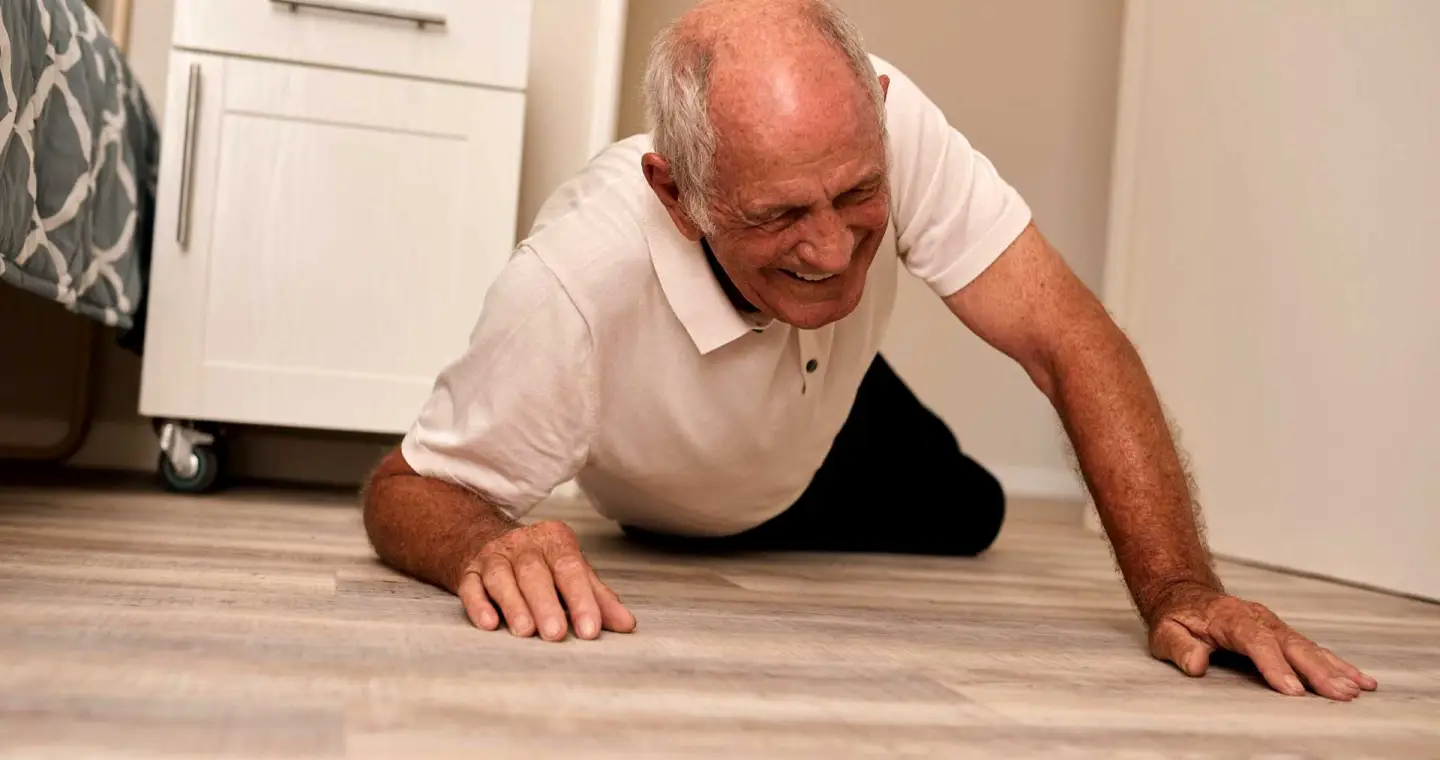Finding a frail older person on the floor is stressful and chaotic. In this post, I provide some guidelines about what to do after a fall. Manage falls carefully. There can be major injury even if pain is not severe. Falls can also be due to a new medical problem. The most important points are:
Step by Step Care After a Fall
- Call 911 immediately for emergencies.
- Even for non-emergencies, do a 5-minute assessment before moving the person.
- Move the person into a sitting position if she/he appears stable.
- Provide follow-up care.
- Prevent future falls.
Be calm, concerned, and respectful with the person who has fallen.
Step 1. Call 911 immediately for emergencies.
It is an emergency if there is:
Severe pain
Problems breathing or talking
Less alert or unresponsive
Visible major injury
Inability to move
Major bleeding
Any major change
Go to Step 2 if there is not immediate evidence of an emergency

Step 2. Take 5 minutes to assess the situation. Do not move the person unless required.
Calmly ask the person/witness:
What happened? (inability to describe what happened is a cause for concern)
Does anything hurt?
How do you feel?
Ask the person to move their arms and legs.
Determine if there is pain around the neck.
Ask the person to take a deep breath.
Assess whether the person is more confused than usual.
Does the person appear “sick” or “not right”?
Call 911 if the 5-minute assessment raises concerns.
Go to Step 3 if no major concerns are raised.

Step 3. Move the person into a comfortable sitting position. Get help to move the person if needed.
Check Vital signs.
a temperature of 100° F or higher is of concern.
a heart rate (beats per minute) of 50 or less or 95 or higher is of concern.
an irregular heart rhythm that is new is of concern.
a systolic blood pressure (mm Hg) of less than 100 or greater than 170 is of concern.
a respiratory rate (per minute) of 14 or less or 24 or greater is of concern.
an oxygen saturation (spO2) of 95% or less is of concern.
Check blood sugar in diabetic patients.
a blood sugar (mg/dl) of 60 or less or 300 or more is of concern.
Check for any wounds or bruising.
If concerns are raised, go to the emergency room, urgent care, or same-day care.
Go to Step 4 if the person appears stable after 15 minutes.

Step 4. Provide Followup care
Determine if the person can walk.
Clean, dress, and bandage minor wounds.
Notify health care provider for non-urgent problems. Report questions about vital signs, blood sugars, medicines, or other medical problems.
Protect against another immediate fall.
Stay with the person for 24 hours. Check in every 15 minutes for one hour, then gradually less.
Recheck vital signs multiple times. Vital signs should gradually return to baseline values.
Continue to check-in regularly for the next several days.
Go to Step 5

Step 5. Prevent Future Falls
Determine causes for the falls and problem solve.
Consider fall monitoring.

Staying calm will:
- help you assess the situation and make the best decisions.
- improve communication. 911 will want information about location, circumstances, and contacts. 911 will need to determine whether emergency assistance is required. Calmly listen to instructions.
- calm the person who has fallen. The person will be able to think and respond more clearly. It is important to avoid panic. Maintain the dignity of the person who has fallen.
Warmest Aloha,
PS: I say it over and over again: There’s no one more important than the caregiver in the daily life of a frail person.


Leave a Reply